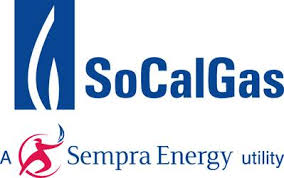SoCalGas Achieves Methane Capture Milestone

Southern California Gas Co. (SoCalGas) today announced the company has passed the one million cubic foot mark in its ongoing methane capture initiative. This innovative process allows for gas that would otherwise be vented to the atmosphere during pipeline replacement work to be saved and reinjected into its pipeline system for later use.
Since SoCalGas began capturing methane during pipeline replacement projects in August, 2016, the company has captured approximately 1.2 million cubic feet of natural gas – the equivalent to about what 6,200 homes use each day on average in the U.S.
“Emissions from natural gas distribution systems represent less than 1 percent of greenhouse gas emissions nationwide, but we’re always looking for ways to improve,” said Rick Phillips, senior director of SoCalGas’ Pipeline Safety Enhancement Plan. “SoCalGas is making every effort to help reduce emissions as much as possible. We are committed to making investments to meet California’s ambitious environmental goals and using this methane capture technology when possible is just one way we are achieving these goals.”
On Aug. 16, SoCalGas crews completed 11 hours of methane capture work near the Sepulveda Dam in Los Angeles. This project captured about 260,500 cubic feet of natural gas from a transmission pipeline that was removed from service as part of a pipeline replacement initiative and pushed SoCalGas over the 1 million cubic foot benchmark. Once the captured gas was cooled, it was injected back into the SoCalGas pipeline system.
The methane capture technique is being used as part of SoCalGas’ Pipeline Safety Enhancement Plan, a multi-billion-dollar program that identifies various high pressure pipeline sections throughout SoCalGas’ system and schedules them to be pressure-tested or replaced. SoCalGas’ Pipeline Safety Enhancement Plan also includes provisions to upgrade, replace or retrofit hundreds of mainline valves in the system with technology that allows them to be opened or closed remotely by system operators from a central control location, or that automatically shuts off the flow of natural gas in the event of a large drop in pressure.
Related News
Related News

- Keystone Oil Pipeline Resumes Operations After Temporary Shutdown
- Freeport LNG Plant Runs Near Zero Consumption for Fifth Day
- Biden Administration Buys Oil for Emergency Reserve Above Target Price
- Mexico Seizes Air Liquide's Hydrogen Plant at Pemex Refinery
- Enbridge to Invest $500 Million in Pipeline Assets, Including Expansion of 850-Mile Gray Oak Pipeline




Comments